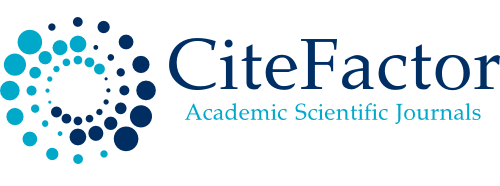Detection of Breast Cancer using Artificial Neural Network
DOI:
https://doi.org/10.61841/ed60nv18Keywords:
Machine learning, Artificial neural network, Back-propagation network, Wisconsin Breast Cancer Database, MatlabAbstract
Breast cancer is one of leading reasons and the second common cause of death among women all over the world. The simplified diagnosis of breast cancer is one of the significant, real world problems that has been faced in the field of medical science. Machine learning is gaining importance in diagnosis of abnormalities as it is a quick simple way for detection of diseases. In this work, we seek to explore the artificial intelligence techniques and machine learning approach to detect breast cancer. The method is applied to the Wisconsin Breast Cancer Dataset collected form the open source. The dataset consists of nine attributes that are used to train the network. The network used in the work is back-propagation. The simulation is done in Matlab software. The network classifies the input data into the two classes of cancer (benign or malignant) as result. The machine learning algorithm of back- propagation seems to be an efficient terminology for the diagnosis of breast cancer.
Downloads
References
1. Adam B. Nover, Shami Jagtap, Waqas Anjum, Hakki Yegingil, Wan Y. Shih, Wei-Heng Shih, Ari D. Brooks; “Modern Breast Cancer Detection: A Technological Review”; International Journal of Biomedical Imaging; December 2009.
2. WHO Breast Cancer Report 2018; https://www.who.int/cancer/prevention/diagnosis-screening/breast- cancer/en/
3. Kim, Soogeun, Kim, Tae, Lee, Soo Hyun, Kim, Wansun, Bang, Ayoung, Moon, Sang, Song, Jeongyoon, Shin, Jae-Ho, Yu, Jae, Choi, Samjin; “Label-Free Surface-Enhanced Raman Spectroscopy Biosensor for On-Site Breast Cancer Detection Using Human Tears”; ACS Applied Materials & Interfaces; 2020.
4. Milosevic M, Jankovic D, Milenkovic A, Stojanov D., “Early diagnosis and detection of breast cancer. Technology and Health Care”, Official Journal of the European Society for Engineering and Medicine; 2018.
5. Ali, Md Azahar, Mondal, Kunal, Jiao, Yueyi, Oren, Seval, Xu, Zhen, Sharma IITK, Ashutosh. Dong, Liang;; “Microfluidic Immuno-Biochip for Detection of Breast Cancer Biomarkers Using Hierarchical Composite of Porous Graphene and Titanium Dioxide Nanofibers”; ACS Applied Materials & Interfaces; 2016.
6. Ain, Khusnul, Wibowo, Ricky, Soelistiono, Soegianto; “Modeling of electrical impedance tomography to detect breast cancer by finite volume methods”; Journal of Physics: Conference Series; 2017.
7. S.K. Bandyopadhyay, S. Banerjee, I.K. Maitra; ”Digital imaging in pathology towards detection and analysis of human breast cancer”; International conference on computational, intelligence, communication systems andnetworks (CICSYN), Liverpool, United Kingdom, pp. 295–300; 2010.
8. Rajkomar A, Dean J, Kohane I. Machine Learning in Medicine. N Engl J Med. 2019;380(14):1347‐1358. doi:10.1056/NEJMra1814259.
9. Steiner, Margaret C.. “Solving cancer: The use of artificial neural networks in cancer diagnosis and treatment.” Journal of Young Investigators 33 (2017).
10. Beam AL, Kohane IS. Big data and machine learning in health care. JAMA 2018; 319: 1317-8.
11. https://en.wikipedia.org/wiki/Breast_cancer_screening. 2016.
12. Jaglan, Poonam , Dass, Rajeshwar, Duhan, Manoj; “Breast Cancer Detection Techniques: Issues and Challenges”; Journal of The Institution of Engineers (India): Series B; 2019.
13. Nover, A.B., Jagtap, S., Anjum, W., Yegingil, H., Shih, W.Y., Shih, W., & Brooks, A.D., “Modern Breast Cancer Detection: A Technological Review”; International Journal of Biomedical Imaging; pp.2137 – 2150; 2009.
14. T. Ratanachaikanont; “ Clinical breast examination and its relevance to diagnosis of palpable breast lesion”;
J. Med Assoc. Thai; pp. 505–507; 2005.
15. B. Cunitz et. al.; “ Improved detection of kidney stones using an optimized doppler imaging sequence”; IEEE International Ultrasonic Symposium Proceedings, pp. 452–456; 2014.
16. Pandya, Hardik & Park, Kihan & Chen, Wenjin & Chekmareva, Marina & Foran, David & Desai, Jaydev; “Simultaneous MEMS-based electro-mechanical phenotyping of breast cancer. Lab on a Chip”; 15. 3695- 3706. 10.1039/C5LC00491H; 2015.
17. A. Kapur, P.L. Carson, J. Eberhard, M.M. Goodsitt, K. Thomenius, M. Lokhandwalla; “Combination of digital mammography with semi-automated 3D breast ultrasound” Technol. Cancer Res. Treat. 3(4); pp.325– 334; 2004.
18. P.K. Saini, M. Singh; “ Brain tumor detection in medical imaging using matlab.”; Int. Res. J. Eng. Technol. 02(02); pp.91–196; 2015.
19. B. Cunitz et. al.; “ Improved detection of kidney stones using an optimized doppler imaging sequence”; IEEE International Ultrasonic Symposium Proceedings, pp. 452–456; 2014.
20. Amato, Filippo & López-Rodríguez, Alberto & Peña-Méndez, Eladia & Vaňhara, Petr & Hampl, Aleš & Havel, Josef. (2013). Artificial neural networks in medical diagnosis. J Appl Biomed. 11. 47- 58.10.2478/v10136-012-0031-x.
21. Naushad, S.M, Ramaiah, M.J, Pavithrakumari, M, Jayapriya J, Hussain, T, Alrokayan, S.AKutala, V.K; “Artificial neural network-based exploration of gene-nutrient interactions in folate and xenobiotic metabolic pathways that modulate suspectibility to breast cancer”. Gene, 580(2), 159-168. doi:10.1016/j.gene.2016.01.023.
22. Bhateja, Vikrant & Devi, Swapna & Urooj, Shabana. (2013). An Evaluation of Edge Detection Algorithms for Mammographic Calcifications. 10.1007/978-81-322-1000-9_46.
23. He, S., Wu, Q., & Saunders, J. (2009). Breast cancer diagnosis using an artificial neural network trained by group search optimizer. Transactions of the Institute of Measurement and Control, 31(6), 517-531. doi:10.1177/0142331208094239.
24. Paramkusham, Spandana & Rao, Kunda & Rao, B. (2013). Early stage detection of breast cancer using novel image processing techniques, Matlab and Labview implementation. 2013,15th International Conference on Advanced Computing Technologies, ICACT 2013. 1-5. 10.1109/ICACT.2013.6710511.
25. https://archive.ics.uci.edu/ml/datasets/breast+cancer+wisconsin+(original)
26. Mishra, BK & Singh, S. & Bhala, S.. (2011). Breast cancer diagnosis using back-propagation algorithm. 470-473. 10.1145/1980022.1980123.
27. F.E.Z.A. El-Gamal et al; “Current trends in medical image registration and fusion. Egypt. Inform. J. 17, pp. 99–124 ; 2015.
28. Joseph R. Corea et al., Screen-printed flexible MRI receive coils. Nat. Commun. 7, 10839. (2016).
29. Dheeb AA.; “Thesis of Embedded feature selection methods based on support vector machine for histopathology grading”; Malaysia: Universiti Kebangsaan; 2017.
30. Ashwaq Q, Siti Norul Huda SA, Shahnorbanun S, Rizuana IH, Fuad I; “An accurate rejection model for false positive reduction of mass localisation in mammogram”; Pertanika Journal of Science and Technology; 25(S):pp.49-62; 2017.
31. Gao Yuan, Zhou Yingzhu, Chandrawati Rona; “Metal and Metal Oxide Nanoparticles to Enhance the Performance of Enzyme-Linked Immunosorbent Assay (ELISA)” 10.1021/acsanm.9b02003; 2020.
32. A. Stojadinovic, A. Nissan, C. D. Shriver, et al., “Electrical impedance scanning as a new breast cancer risk stratification tool for young women,” Journal of Surgical Oncology, vol.97, no. 2, pp. 112–120, 2008.
33. B. Sholz and R. Anderson, "On Electrical Impedance Scanning- Principles and Simulations," vol. 68, no. 1, pp.35-44, 2000.
34. Campisi, Matthew & Barbre, Curtis & Chola, Aditya & Cunningham, Gisselle & Woods, Virginia & Viventi, Jonathan. (2014). Breast cancer detection using high-density flexible electrode arrays and electrical impedance tomography. 2014 36th Annual International Conference of the IEEE Engineering in Medicine and Biology Society, EMBC 2014. 2014.
Downloads
Published
Issue
Section
License

This work is licensed under a Creative Commons Attribution 4.0 International License.
You are free to:
- Share — copy and redistribute the material in any medium or format for any purpose, even commercially.
- Adapt — remix, transform, and build upon the material for any purpose, even commercially.
- The licensor cannot revoke these freedoms as long as you follow the license terms.
Under the following terms:
- Attribution — You must give appropriate credit , provide a link to the license, and indicate if changes were made . You may do so in any reasonable manner, but not in any way that suggests the licensor endorses you or your use.
- No additional restrictions — You may not apply legal terms or technological measures that legally restrict others from doing anything the license permits.
Notices:
You do not have to comply with the license for elements of the material in the public domain or where your use is permitted by an applicable exception or limitation .
No warranties are given. The license may not give you all of the permissions necessary for your intended use. For example, other rights such as publicity, privacy, or moral rights may limit how you use the material.









